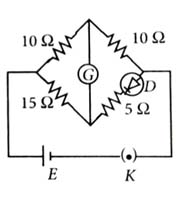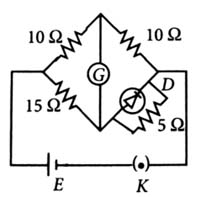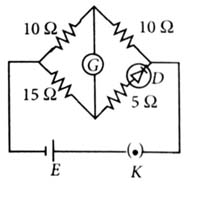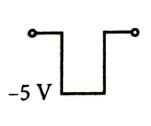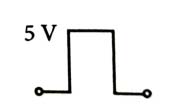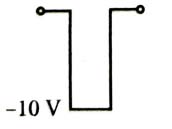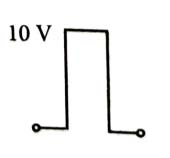Topic Question Set
Q 1
:
A full wave rectifier circuit with diodes and is shown in the figure. If input supply voltage then at msec [2025]
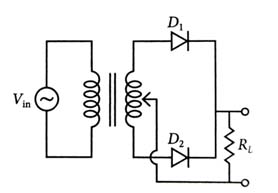

and both are forward biased
and both are reverse biased
is forward biased, is reverse biased
is reverse biased, is forward biased
(4)
Given that, volt
and
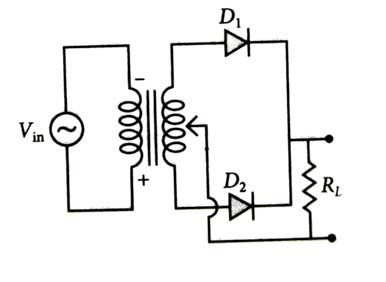
Hence, is reverse biased and is forward biased.
Q 2
:
Choose the correct circuit which can achieve the bridge balance. [2024]
(1)
For the bridge to be balanced, the arm containing diode should have 15 resistance and diode in forward bias. In option (2) and (4), diode is in reverse bias and in option (3) diode is in parallel with a 5 resistance, so effective resistance of this arm is less than 5 . So the correct option is (1) as diode is in series with 5 resistance which can give an equivalent resistance of 15 in case if the diode is considered not ideal.
Q 3
:

In the given circuits a), b) and c), the potential drop across the two p-n junctions are equal in: [2022]

Circuit a) only
Circuit b) only
Circuit c) only
Both circuits a) and c)
(4)
The potential drop across junction diode is equal when either both are in forward biased or reversed biased. So, in circuits (1) and (3) both are in forward biased.
So, correct option is (4).
Q 4
:
In a junction diode, change in temperature due to heating [2018]
affects only reverse resistance
affects only forward resistance
does not affect resistance of p-n junction
affects the overall characteristics of p-n junction.
(4)
Due to heating, number of electron-hole pairs will increase, so overall resistance of diode will change.
Due to which forward biasing and reversed biasing both are changed.
Q 5
:
Which one of the following represents forward bias diode? [2017, 2006]
(4)
A diode is said to be forward biased if p-side is at higher potential than n-side of p-n junction.
Q 6
:
The given circuit has two ideal diodes connected as shown in the figure. The current flowing through the resistance will be [2016]
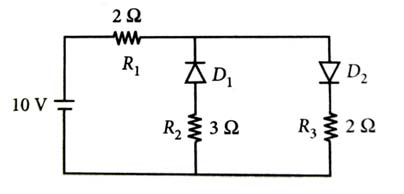

2.5 A
10.0 A
1.43 A
3.13 A
(1)
Diode is reverse biased so, it will block the current and diode is forward biased, so it will pass the current.

Hence, equivalent circuit becomes as shown in the figure.
Current in the circuit = Current flowing through the resistance
Q 7
:
Consider the junction diode as ideal. The value of current flowing through AB is [2016]
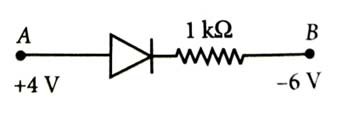

A
A
A
A
(4)
Here, the p-n junction diode is forward biased, hence it offers zero resistance.
Q 8
:
In the given figure, a diode D is connected to an external resistance and an e.m.f. of 3.5 V. If the barrier potential developed across the diode is 0.5 V, the current in the circuit will be
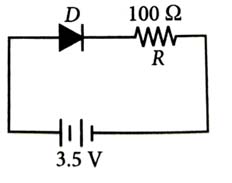

20 mA
35 mA
30 mA
40 mA
(3)
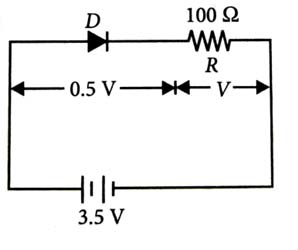
The potential difference across the resistance is
By Ohm’s law,
the current in the circuit is
Q 9
:
If in a junction, a square input signal of 10 V is applied, as shown, then the output across will be [2015]
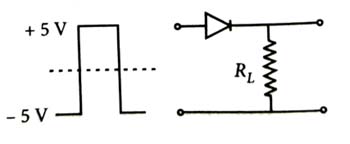

(2)
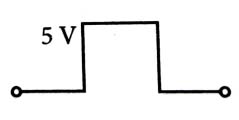
Diode is forward bias for positive voltage i.e. , so output across is given by as shown in figure.

